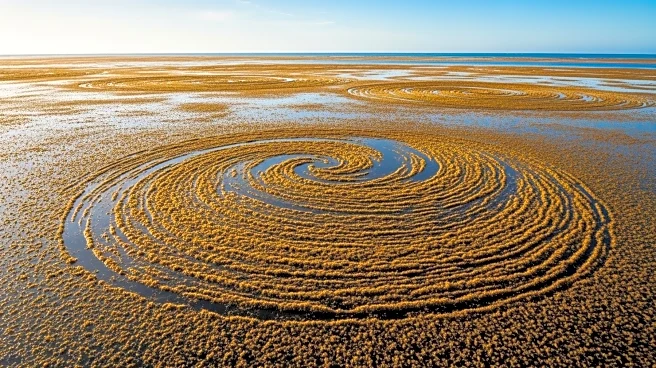What's Happening?
A massive ecological phenomenon known as the Great Atlantic Sargassum Belt is expanding across the Atlantic Ocean, stretching from West Africa to the Gulf of Mexico. The bloom reached a record biomass of 37.5 million tons in May 2025, raising concerns among scientists and coastal communities. The belt's growth is fueled by nutrient influxes from major rivers, such as the Mississippi and Amazon, and human activities like agricultural runoff and wastewater discharge. This expansion poses significant challenges to coastal economies and public health.
Why It's Important?
The expansion of the sargassum belt has direct implications for coastal communities, affecting tourism, fisheries, and public health. The dense mats of seaweed can clog beaches, disrupt marine life, and release harmful gases as they decompose. The phenomenon highlights the impact of human activities on marine ecosystems, emphasizing the need for sustainable practices to mitigate nutrient pollution. The situation calls for coordinated efforts among policymakers, scientists, and communities to address the environmental and economic challenges posed by the sargassum blooms.
What's Next?
Coastal communities may need to implement emergency cleanup measures and develop strategies to manage the sargassum influx. Researchers will continue to study the belt's growth patterns and nutrient composition to better understand its dynamics and potential solutions. International cooperation may be necessary to address the transboundary nature of the issue and develop effective management practices.
Beyond the Headlines
The sargassum belt's expansion serves as a reminder of the interconnectedness of human activities and natural systems. It underscores the importance of addressing nutrient pollution at its source and considering the long-term impacts on marine ecosystems. The situation may prompt discussions on global environmental policies and the need for sustainable development practices.















